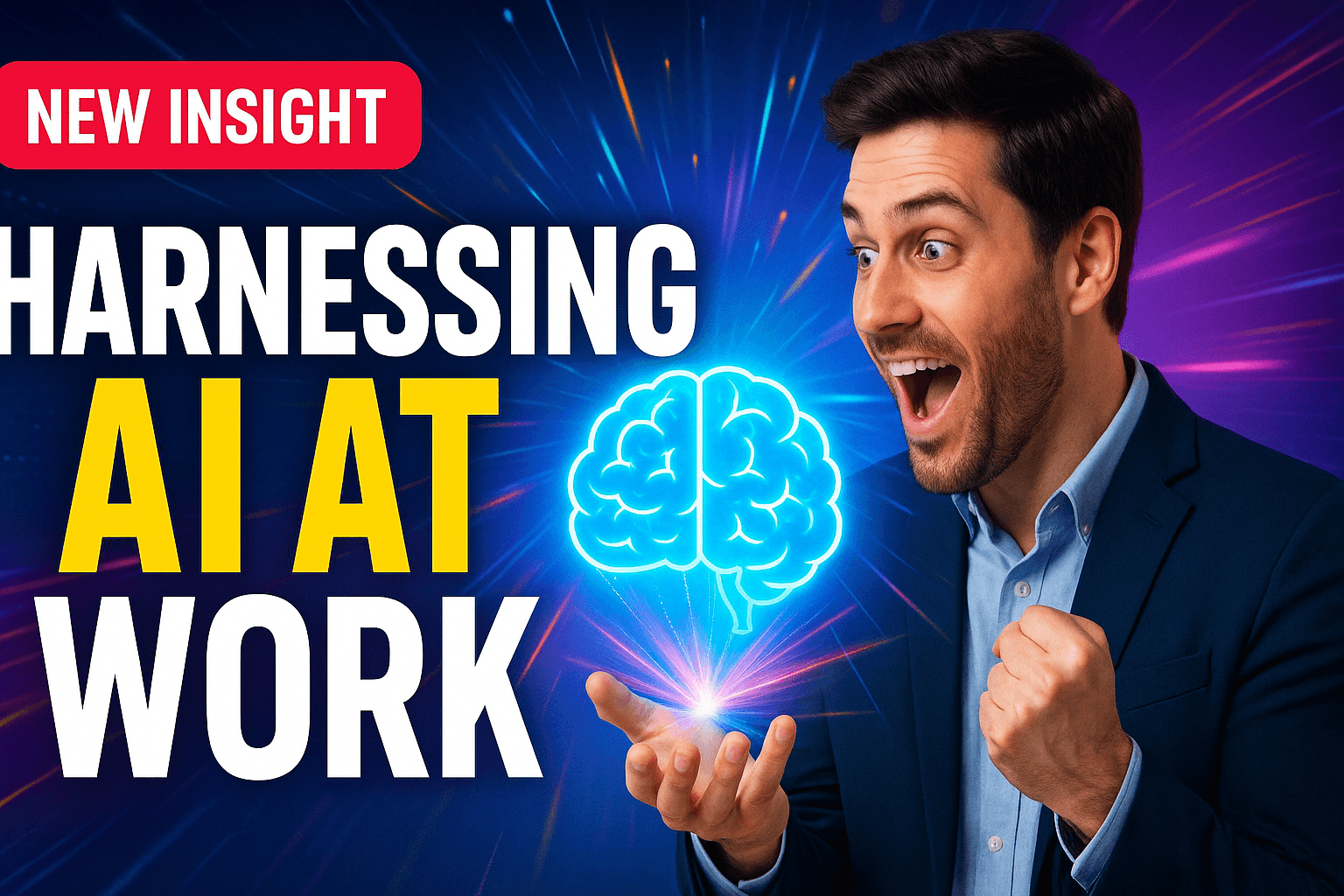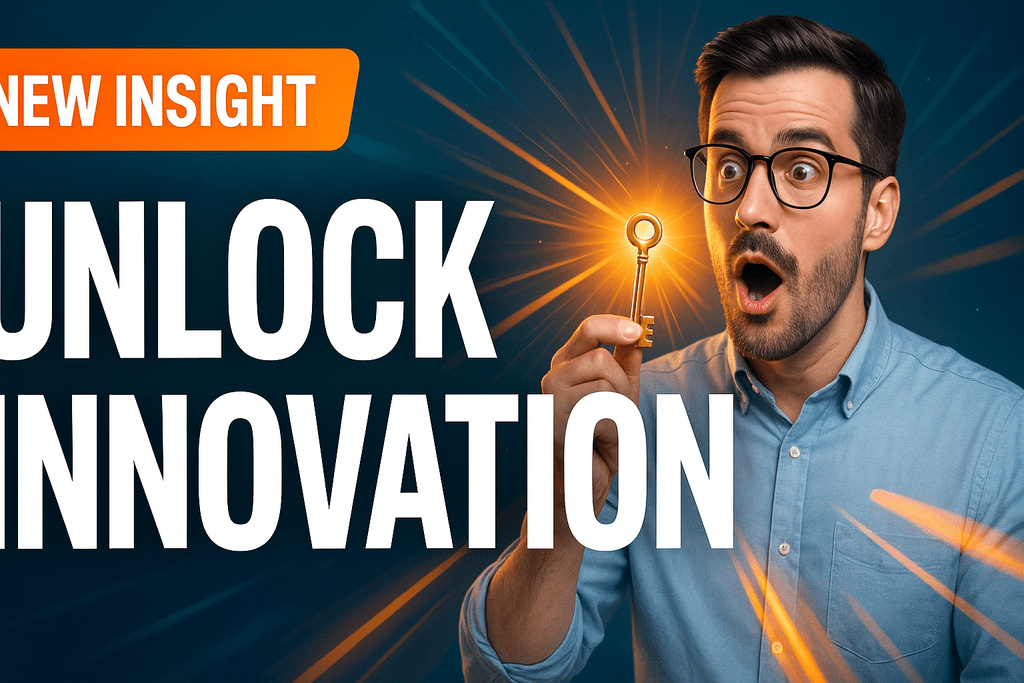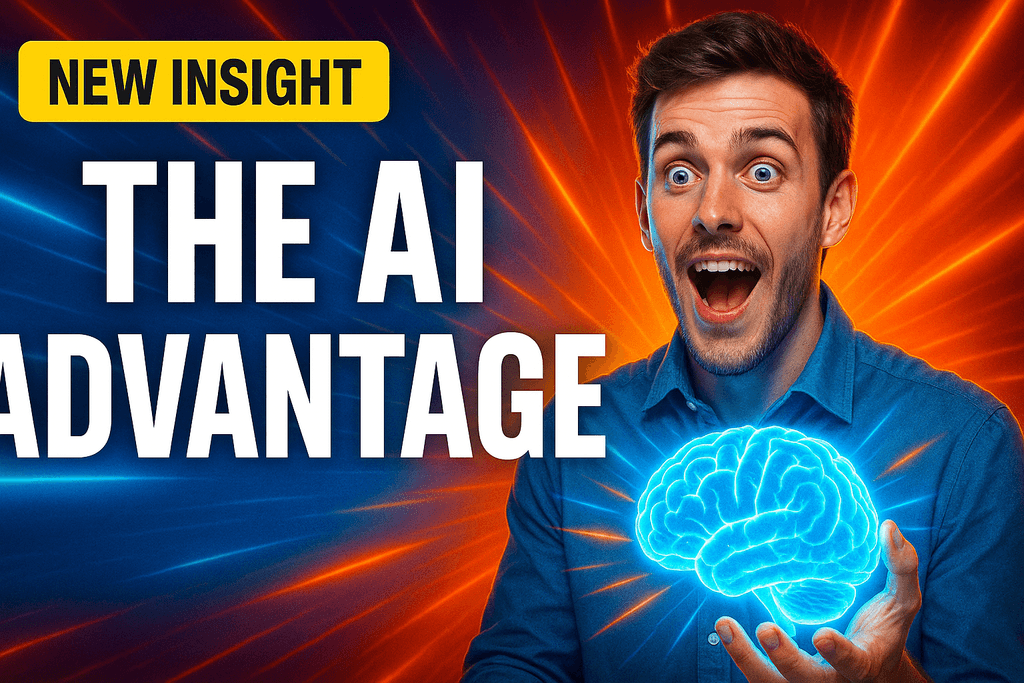
Table of Contents
Introduction: The SME Productivity Crisis and the Agentic AI Breakthrough
Small and medium enterprises face an unprecedented challenge in 2025: while large corporations are already quadrupling their efficiency with autonomous AI systems, SMEs continue struggling with fragmented tools, manual processes, and the traditional 40-hour work week. The solution lies not in more software, but in a fundamental paradigm shift toward Agentic AI - intelligent digital team members that work proactively and revolutionize business processes.
Imagine this: your team focuses only 4 hours daily on strategic core tasks while autonomous AI agents handle 90% of repetitive activities. No more endless email chains, no manual data entry, no forgotten follow-ups. This vision is already becoming reality for progressive SMEs using Orbitype's Agentic Cloud OS.
In this strategic guide, you'll discover how your company can achieve a 400% productivity increase through targeted deployment of Agentic AI systems. We'll show you concrete implementation strategies, ROI calculations, and a proven 30-day roadmap for transforming from traditional workflows to highly efficient, AI-powered operations.
Agentic Cloud OS: The Evolutionary Leap from Tools to Team Members
While conventional automation solutions remain passive tools waiting for human instructions, Orbitype's Agentic Cloud OS fundamentally revolutionizes the concept of business automation. Instead of rigid if-then rules, autonomous AI agents work as full-fledged digital team members that proactively identify tasks, make decisions, and orchestrate complex workflows.
The 4 pillars of the Agentic AI revolution:
1. Autonomous Decision-Making: AI agents continuously analyze data streams, recognize patterns, and make context-based decisions without human intervention. An email agent, for example, doesn't just categorize incoming messages but answers routine inquiries, forwards complex cases, and automatically updates CRM systems.
2. Proactive Workflow Orchestration: Instead of waiting for triggers, Agentic AI systems anticipate business needs. An ambient agent continuously monitors customer behavior, identifies churn risks, and automatically initiates retention campaigns before problems arise.
3. Contextual Learning Capability: Every interaction becomes a learning opportunity. AI agents develop deep understanding of company context, customer preferences, and business processes, causing their effectiveness to grow exponentially.
4. Seamless Integration: The Orbitype platform connects with all existing systems - from CRM to ERP - without lock-in effects or complex migrations.
The 30-Day Roadmap: From 40 Hours to 4 Hours of Focus Time
Transforming to an AI-powered workflow requires a structured approach. Our proven 30-day roadmap guides your SME step-by-step from traditional workflows to highly efficient Agentic AI systems.
Week 1-2: Foundation & Quick Wins
- Day 1-3: Audit existing workflows and identify the 5 most time-consuming repetitive tasks
- Day 4-7: Implementation of the first AI agent for email management with 60% automation rate
- Day 8-14: Deployment of a document generation agent for proposals and contracts
Expected Results: 8-12 hours time savings per employee per week
Week 3-4: Workflow Integration & Scaling
- Day 15-21: Integration of CRM automation and lead enrichment agents
- Day 22-28: Deployment of social media management and content creation agents
- Day 29-30: Optimization and fine-tuning of all AI agents based on performance data
Expected Results: 20-25 hours time savings per employee per week
Critical Success Factors:
Start with low-risk, high-impact use cases like email sorting or appointment scheduling. Establish clear KPIs for efficiency gains and quality metrics. Invest in employee training to ensure optimal collaboration between humans and AI agents.
ROI Calculation: 400% Productivity Increase in Numbers
Investment in Agentic AI systems pays off within just a few weeks. Here are the concrete numbers for a typical 25-person SME:
Cost analysis before AI implementation:
- Average annual salary per employee: 65,000 euros
- Time spent on repetitive tasks: 32 hours/week (80% of work time)
- Annual costs for inefficient processes: 1,040,000 euros
- Opportunity costs from missed strategic projects: 300,000 euros
Investment in Agentic AI (Year 1):
- Orbitype Agentic Cloud OS license: 36,000 euros/year
- Implementation and setup: 15,000 euros one-time
- Training and change management: 8,000 euros
- Total investment year 1: 59,000 euros
Savings after 6 months:
- Automation of 28 hours/week per employee (87.5%)
- Released work time for strategic tasks: 700 hours/week
- Annual cost savings: 910,000 euros
- Additional revenue through strategic focus: 180,000 euros
ROI calculation:
Annual net profit: 1,031,000 euros
ROI after 12 months: 1,647% (16.5x Return on Investment)
These numbers are based on real implementations with Orbitype customers and include conservative estimates. Many companies achieve even higher efficiency gains through the continuous learning capability of AI agents.
Case Studies: SME Success Stories with Agentic AI
Three real success stories show how different SME industries benefit from Agentic AI:
Case 1: Digital Marketing Agency (18 employees)
Challenge: 70% of work time was spent on client reporting, email management, and content planning.
Solution: Deployment of 4 specialized AI agents:
- Automated Reporting Agent for client dashboards
- Social Media Content Agent with brand consistency
- Email Triage Agent for customer inquiries
- Lead Research Agent for new customer acquisition
Result: 32 hours per week of freed capacity per employee, 45% revenue increase in 6 months through focus on strategic consulting.
Case 2: Tax Advisory Firm (12 employees)
Challenge: Client communication and document management tied up 80% of qualified work time.
Solution: Industry-specific AI agent suite:
- Client Outreach Agent for company registry research
- Document Generation Agent for standard correspondence
- Email Processing Agent with specialized terminology
Result: 60% reduction in administrative activities, capacity for 40% more clients without staff expansion.
Case 3: E-Commerce Company (35 employees)
Challenge: Customer service, product data maintenance, and inventory management required constant manual intervention.
Solution: Comprehensive e-commerce AI agent orchestration:
- 24/7 Customer Service Agent with product knowledge
- Inventory Management Agent with predictive analytics
- Content Creation Agent for product descriptions
Result: 90% automation of customer service, 25% revenue increase through optimized product presentations.
Agentic AI vs. Low-Code: Why Traditional Automation Fails
Many SMEs have already experimented with low-code platforms like Zapier or Microsoft Power Automate - often with disappointing results. The fundamental difference between traditional automation and Agentic AI lies in intelligence and adaptability.
Limitations of traditional low-code systems:
- Rigid if-then logic: Workflows fail with unforeseen situations or exceptions
- No contextual understanding: Systems cannot distinguish between important and unimportant emails
- High maintenance overhead: Every change requires manual reprogramming
- Limited scalability: Complexity grows exponentially with the number of workflows
Agentic AI advantages:
- Contextual intelligence: AI agents understand nuances, priorities, and business context
- Self-learning systems: Continuous improvement without manual intervention
- Exception handling: Intelligent escalation for unknown situations
- Natural scaling: New tasks are automatically integrated into existing workflows
Concrete example - Email management:
Low-code approach: "If email subject contains 'invoice', then forward to accounting"
Agentic AI approach: Agent analyzes email content, sender history, urgency, and business context. Intelligently decides between immediate processing, forwarding, or escalation. Learns from every interaction.
This intelligent approach explains why Agentic AI systems achieve 300-500% higher automation rates than traditional low-code solutions.
The Future of Human-AI Collaboration in the SME Context
The evolution to AI-powered SMEs doesn't mean replacing human workforce, but strategically upgrading it. In the future, employees will become AI orchestrators who control complex business processes through intelligent delegation to specialized agents.
The new work model:
Strategic focus time (4 hours/day): Employees concentrate exclusively on creative problem-solving, customer relationships, and strategic planning. AI agents handle all preparatory research, data analysis, and routine tasks.
AI supervision and optimization: Teams evolve into AI trainers who continuously refine agents, identify new use cases, and increase automation depth.
Hybrid decision-making: Critical business decisions emerge through the combination of AI-generated insights and human intuition. Agents deliver data-based recommendations while humans evaluate strategic context.
New competency requirements:
- AI literacy: Understanding of agent capabilities and limitations
- Prompt engineering: Effective communication with AI systems
- Workflow design: Orchestration of complex human-AI processes
- Data interpretation: Evaluation of AI-generated insights
This transformation leads to a fundamental upgrade in work quality: employees evolve from task processors to strategic thinkers and innovators. The result is higher job satisfaction, better employee retention, and exponentially increased company performance.
Implementation Checklist: Your First Steps to 400% Productivity Increase
The path to AI-powered productivity revolution begins with concrete, measurable steps. This checklist guides you systematically through the critical implementation phases:
Phase 1: Preparation and Analysis (Week 1)
- ✅ Conduct workflow audit: Document all repetitive tasks with time requirements
- ✅ Calculate ROI potential: Identify the 5 most cost-intensive manual processes
- ✅ Secure stakeholder buy-in: Present the Agentic AI vision to management and teams
- ✅ Check data quality: Ensure CRM, emails, and documents are structured
Phase 2: Pilot Implementation (Week 2-3)
- ✅ Set up Orbitype account: Start with the free trial version
- ✅ Deploy first AI agent: Begin with email management or document generation
- ✅ Define success metrics: Establish KPIs for time savings and quality metrics
- ✅ Initiate team training: Train 2-3 power users as AI agent champions
Phase 3: Scaling and Optimization (Week 4-8)
- ✅ Integrate additional agents: Expand to CRM automation and content creation
- ✅ Workflow orchestration: Connect agents into intelligent process chains
- ✅ Performance monitoring: Analyze efficiency gains and optimization potential weekly
- ✅ Change management: Support teams in adapting new work methods
Critical success factors: Start with low-risk applications, measure everything, invest in employee training, and plan iterative improvements. The Orbitype platform provides all tools for successful transformation.
Sources and Resources
Sources used and additional resources:
- AI Agent Use Cases 2025: Maximizing Enterprise Efficiency - Comprehensive overview of AI agent applications
- The AI Agent Revolution - Detailed analysis of different AI agent architectures
- Orbitype Platform Features - Technical specifications of the Agentic Cloud OS
- Internal Orbitype Knowledge Base - Industry-specific AI agent applications and ROI data
- McKinsey Global Institute: "The Age of AI" - Productivity studies for SMEs
- Deloitte Digital: "Future of Work in SMEs" - Automation trends 2025
Useful tools and platforms:
- Orbitype Agentic Cloud OS: Central platform for AI agent deployment
- Orbitype Community: Best practices and automation snippets
- ROI Calculator: Free calculation of automation potential
Further reading:
- "Agentic AI Implementation Guide" - Technical documentation
- "SME Digital Transformation Playbook" - Strategic guide
- "Human-AI Collaboration Framework" - Organizational development





















.png&w=1024&q=80)
